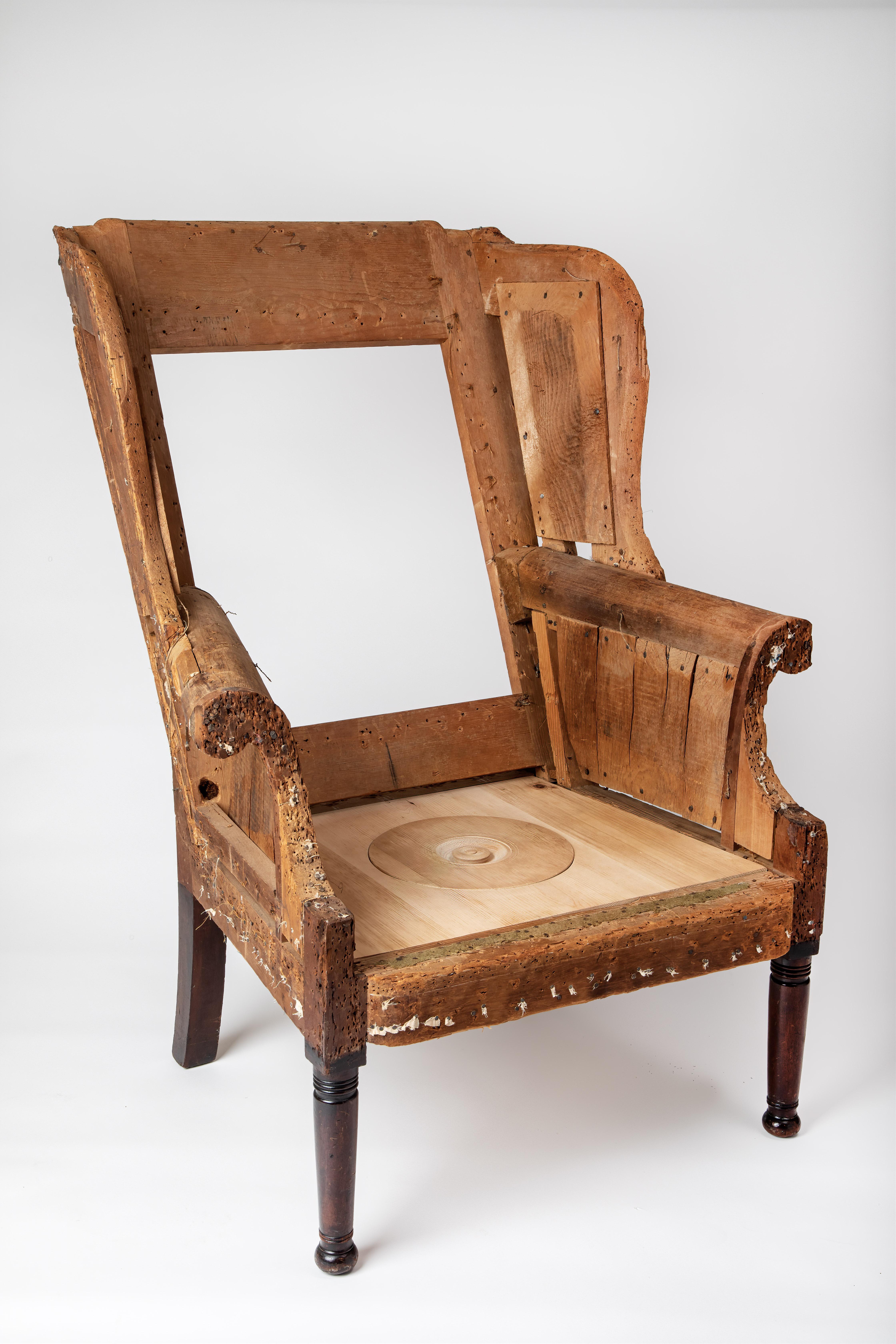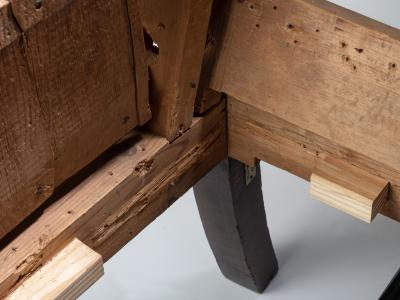Easy chair
Probably Delaware
1810-1820
Maker
Possibly Janvier School
Measurements
42 in x 32 in x 32 in
Materials
Mahogany; white pine (upper frame), tulip poplar (arms), cherry (face board of the arms), hard pine (seat frame)
Credit Line
Historic Odessa Foundation
Accession Number
1986.11
Inscription
“Wm. CORBET HOUSE / ODESSA, DELAWARE - 1772.” is stamped into a metal tag on the inside of the left rear leg.
Condition Notes
Originally a chamber chair, the chair was subsequently upholstered with springs in the seat. The chair back has been angled farther backward (see "Comments" below). Later casters were added to the four legs and have since been removed. The legs are now about 1 inches shorter.
Provenance
The easy chair descended in the William Corbit family through Sara Corbit Levis (1871–1952) to Mary Corbit Crowe (1897–1976) to her niece Sara Corbit Reese Pryor (1932–2019), from whom it was acquired in trade.
Comments
The easy (or wing) chair has glue-block evidence around the inside of the seat frame that indicates it once had a platform to support a chamber pot--a common feature of such chairs. (For another easy chair with the chamber pot platform intact, see acc. no. 1958.3278.) At some time many years ago, it was removed, springs were installed, and the chair was reupholstered. All of the upholstery on this easy chair was removed in the late 1990s; fortunately, the chair was not recovered, allowing detailed inspection of the frame. A
small section of the original green wool upholstery survives on the top of the front seat rail (see accompanying image).
Dating of the chair relies in part on the shape of the crest rail and the front seat rail. The profile of the front leg turnings provides another indication, as does the shape of the arms. Seat-frame evidence exists for front-to-back L-shaped rails or tracks that allowed the chamber pot to slide out from the rear, a feature described in the 1811 Journeymen Cabinet and Chairmakers’ Pennsylvania Book of Prices (p. 80), yet another dating reference. The thin boards lining the wings and sides of the chair have water-powered saw marks. Another easy chair with similar boards has Janvier associations (collections of the DAR Museum, acc. no. 74.19), but such boards were used broadly.
Exposed evidence on the frame shows that the entire back of the chair was angled farther backward many years after it was made. Originally, the side wings joined the arms about three inches closer to the front. In its original configuration, this easy chair stood more upright.
Bibliography
Zimmerman, A Storied Place, 99-101.


